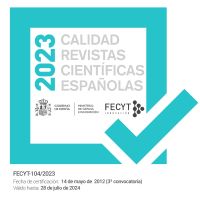Achievement the university entrance exam and election of Scientific-Technological degrees by gender
DOI:
https://doi.org/10.5944/reop.vol.25.num.1.2014.12016Keywords:
academic choice, academic performance, gender, scientific and technological studies, university entrance examinationAbstract
ABSTRACT
Boys and girls’ behaviours when they have to choose university studies have been investigated for decades. In these researching works it has been found that, despite the efforts made, those decisions are still conditioned by gender. Taking this into account, this paper analyzes the results and decisions made by the students of Biomedical, Science and Technological Senior Secondary Education who have attended the entrance exam (PAU) at the University of Oviedo in a period of five years (2006-2010). The University has supplied us all data and they have been processed with SPSS 19 in order to obtain different parameters disaggregated by gender, score on the issues, career choice, and so on. The paper also shows the dimensions of the sample disaggregated by gender, scientific-technological and bio-health subjects and career choice. We are also interested in the results achieved in the entrance examination in relation to gender, the subjects which have been evaluated and the academic choice. More specifically, we explore the factors that predict the already mentioned choice. Our outcomes are discussed comparing them with conclusions of other studies. The data verify certain lines of evolution but, on the other hand, some of them contradict long-established trends in other countries: resistance to choose technological studies is still observed in girls, whereas a set of changes are taking place (more women are present in traditionally male studies and there is a decline or even disappearance of differences between boys and girls’ academic performance).
Downloads
Downloads
How to Cite
Issue
Section
License
Las obras que se publican en la revista REOP están sujetas a los siguientes términos:
1. Los autores conservan los derechos patrimoniales (copyright) de las obras publicadas, y garantizan a la revista el derecho de ser la primera publicación del trabajo al igual que permiten la reutilización de las mismas bajo la licencia de uso indicada en el punto 2.
2. Las obras se publican en la edición electrónica de la revista bajo una licencia Creative Commons Reconocimiento-NoComercial 4.0 Internacional . Se pueden copiar, usar, difundir, transmitir y exponer públicamente, siempre que: I) se cite la autoría y la fuente original de su publicación (revista, editorial y URL de la obra); II) no se usen para fines comerciales; III) se mencione la existencia y especificaciones de esta licencia de uso.
3. Condiciones de auto-archivo. Se permite y se anima a los autores a difundir electrónicamente la publicación de sus obras, ya que favorece su circulación y difusión y con ello un posible aumento en su citación y alcance entre la comunidad académica.






